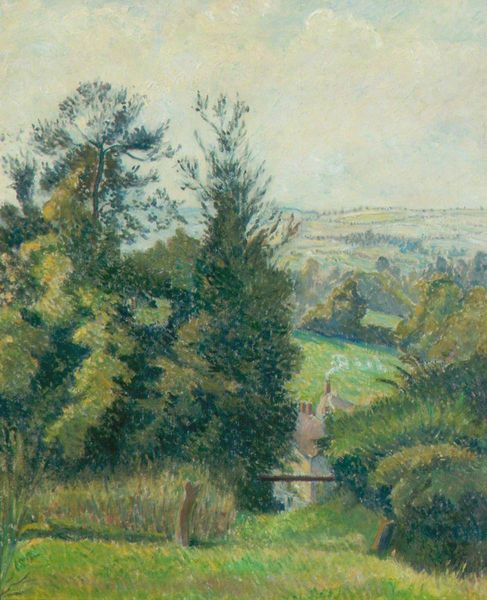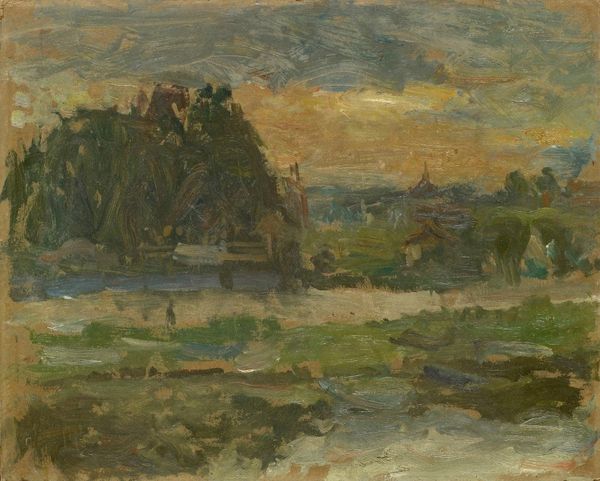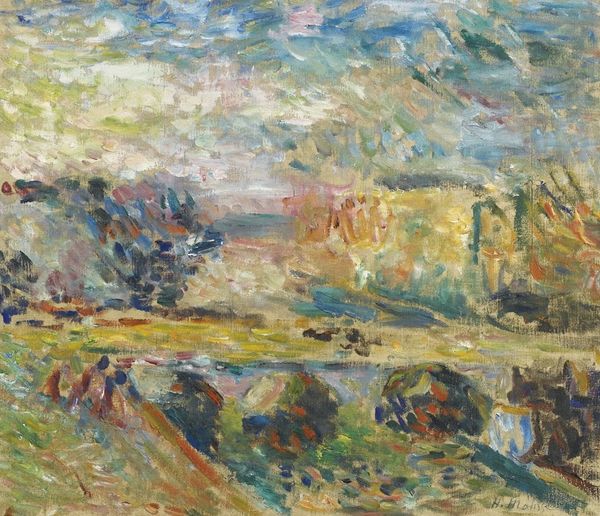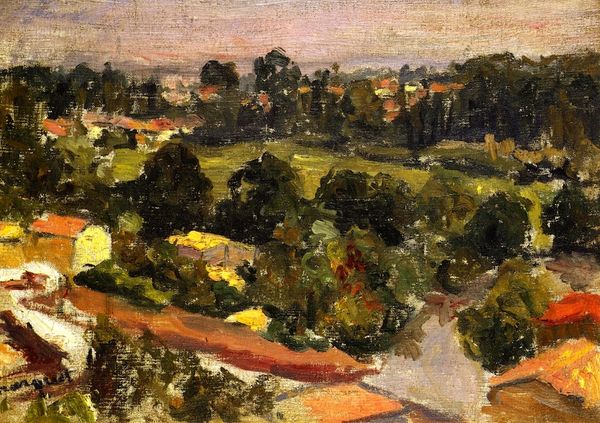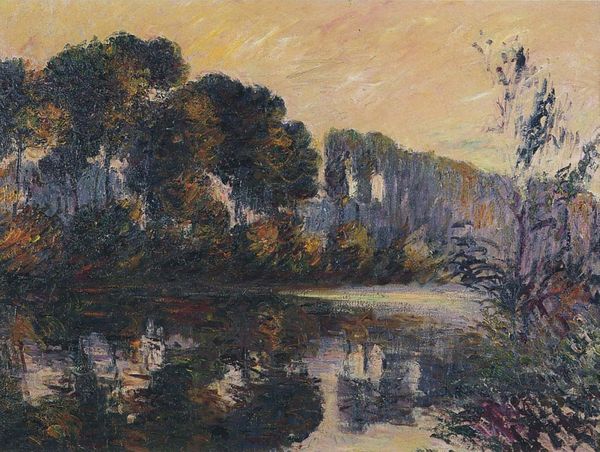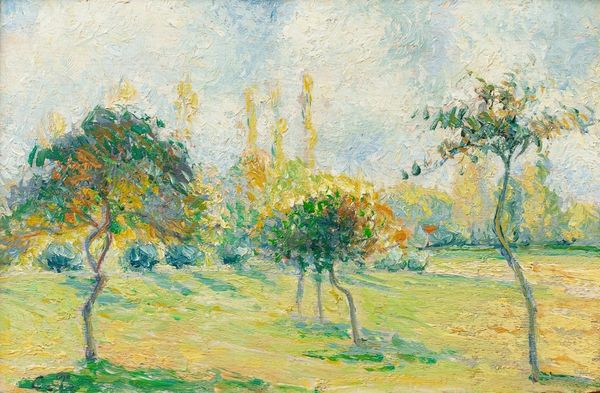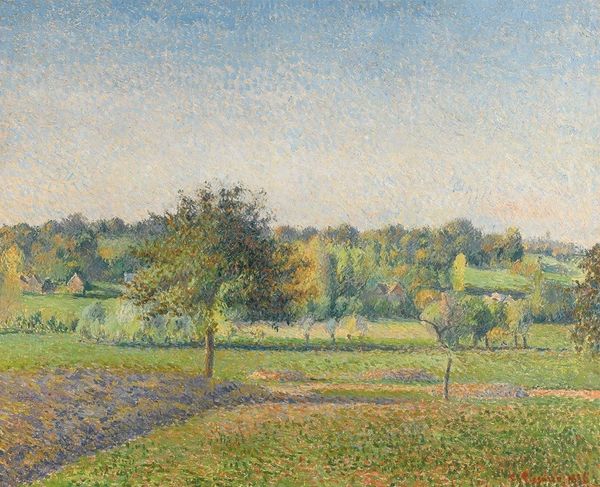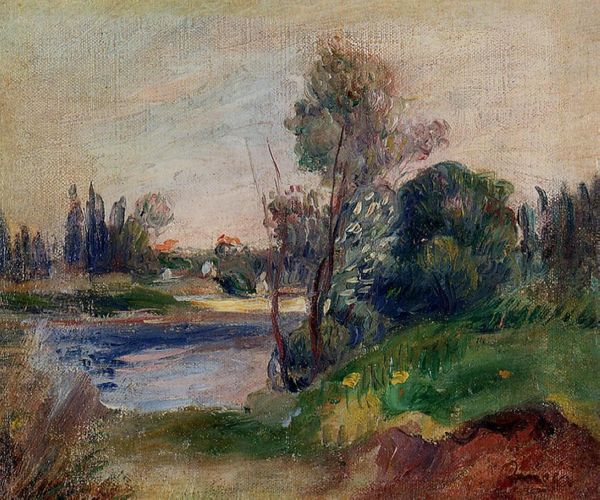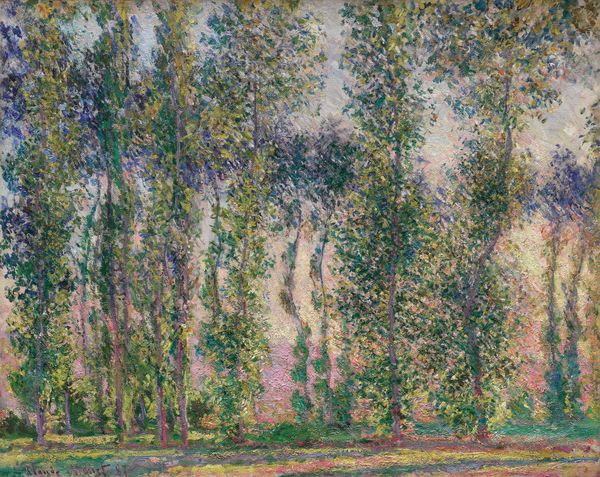
The Tuileries (study) 1876
0:00
0:00
claudemonet
Musée d'Orsay, Paris, France, Musée Marmottan Monet, Paris, France
painting, plein-air, oil-paint, impasto
#
painting
#
impressionism
#
impressionist painting style
#
plein-air
#
oil-paint
#
landscape
#
impressionist landscape
#
possibly oil pastel
#
impasto
#
cityscape
Copyright: Public domain
Editor: So, here we have Claude Monet's "The Tuileries (study)," painted in 1876. It's an oil-on-canvas piece that really captures a hazy atmosphere. There's a real softness to the scene. What do you see in this work? Curator: Beyond its beauty, "The Tuileries" is a document of bourgeois leisure, depicting a space deeply implicated in the social and political landscape of 19th-century Paris. Think of the park's history – once a royal garden, then a public space during the Revolution, now reimagined during the rise of the bourgeoisie. Doesn't the muted palette and the hazy atmosphere, beyond Impressionism, speak to the societal complexities? What is Monet obscuring here? Editor: Obscuring? I guess I hadn’t thought about it like that. I was focused on the Impressionistic style and the fleeting moment. Curator: But isn't that the point? This "fleeting moment" captures the everyday life of a particular class at a specific historical juncture. The soft brushstrokes, the emphasis on light and atmosphere – aren't they also strategies for aestheticizing a world built on privilege and exclusion? Consider the historical context: the reconstruction of Paris under Haussmann, which widened streets and displaced working-class communities. How complicit is Monet, in portraying the new Paris as if without conflict? Editor: That gives me a lot to consider about Monet's choice of subject matter and how he presents it. Curator: Exactly. This painting is not just a pretty landscape, but an engagement, deliberate or not, with power structures. Editor: I’ll definitely view Impressionism through a different lens now. Thanks for that! Curator: My pleasure. It’s about connecting brushstrokes to broader societal canvases.
Comments
No comments
Be the first to comment and join the conversation on the ultimate creative platform.
